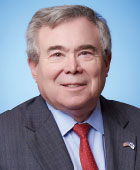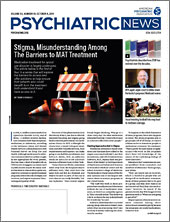There is a great deal of concern among our colleagues in psychiatry and primary care, the public, and health care experts regarding the shortage of psychiatrists in the United States. My office receives multiple calls each week from people seeking care for themselves or family members. All have insurance, have often checked online directories (un)maintained by insurers, and cannot locate a psychiatrist to see them. Were those people seeking primary care or medical/surgical specialty care, there would be much less of a problem identifying a potential provider. While prospective patients might have to wait a few weeks for a primary care appointment or even several months for a specialist, they would be able to schedule an appointment. Not so for psychiatrists, especially in the greater New York area and probably in most major cities. In rural areas they would be completely out of luck.
The sources of these problems are well established. Insurers—especially managed care plans—have insufficient numbers of psychiatrists on their panels who actively see new patients. It is a form of rationing and reflects the discrimination and stigma that remain so much of an issue in our field. These same insurers have fee schedules that pay psychiatrists on average 21% less than primary care physicians. These fees are probably a fraction of the actual out-of-network fees that patients pay. The 2017 Milliman Research Report on analyzing disparities between coverage of treatment for mental and substance use disorders versus other medical conditions showed that insured patients seeking psychiatric care had to access services out of network three to almost six times more frequently than for medical/surgical care. This represented a doubling of access restrictions during the first three years of parity regulatory oversight.
These types of abuses by insurers would never be tolerated by private-sector employers or patients for medical/surgical care. Enforcement of the Mental Health Parity and Addiction Equity Act has been almost nonexistent. The Mental Health Parity Compliance Act, co-sponsored by Sen. Chris Murphy (D-Conn.) and Sen. Bill Cassidy (R-La.) and supported by APA, would tighten much-needed parity enforcement for these ERISA plans. At the state level, several states have enacted APA’s model parity legislation, while many other states either passed partial or more comprehensive versions. But this is only part of the problem. Imagine if we actually had full parity as required by federal law and regulations. The demand for services would be even more overwhelming, and I fear the solutions that would come from our legislators would be ones in which the lowest level of care would become the norm. The fact with which we must grapple is that there are not enough psychiatrists in the United States.
The Association of American Medical Colleges reported there were about 38,000 practicing psychiatrists in the United States in 2017 (the year for which latest data are available), and 61.3% were 55 or older. Our workforce is rapidly diminishing despite an increase in psychiatry residents and renewed popularity of our field among graduating medical students. In comparison with Western European nations, the supply of psychiatrists in the United States is far lower. Our country has about 14 psychiatrists per 100,000 population. Switzerland has 45; France, Sweden, Germany, the Netherlands, Norway, Finland, and the United Kingdom all have between 20 and 22 psychiatrists per 100,000 population. Our low number hardly reflects that our citizens are less in need of psychiatric care.
In fact, given the epidemics of death from opiate overdoses, suicide, and school shootings by young people with emotional problems, we need many more psychiatrists. Sen. Chuck Schumer (D-N.Y.) is advocating for legislation to add 15,000 residency positions under the so-called Physician Shortage Act of 2017. We can hope that a significant portion of any new graduate medical education funding will be allocated to psychiatry as there is bipartisan consensus that a mental health crisis exists in our nation. But we cannot train enough new psychiatrists fast enough to address the critical need for psychiatric care. My next column will address what I believe are workable and reasonable options. ■

